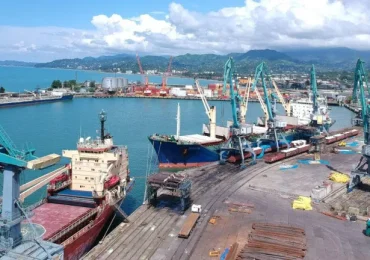This piece will illustrate some of the risks of being deemed an investment firm ‘too big to fail’ by the global regulatory authorities, and why certain firms may consider alternative operation methods following the implementation of the new regime.
The financial crisis highlighted the impact of large banks collapsing, and the systemic risk that these insolvencies created. The ‘failures’ of Bear Stearns and Merrill Lynch was cushioned by their private acquisition rescues, whereas the near collapse of AIG Financial Products necessitated a government bailout under the Troubled Asset Relief Program. The insolvency of Lehman Brothers, on the other hand, is still felt today, with creditors pursuing their assets likely until 2020.
Following the meeting of the Financial Stability Board (‘FSB’) on 25 September 2015, the global community elected to more arduously regulate what they considered ‘too big to fail,’ or ‘global systemically important banks.’
GLOBAL RESPONSE
The FSB proposed, in November 2014, to create specific capital and liquidity rules for global systemically-important banks (‘G-SIBs’). The underlying rationale focused on the critical functions these G-SIBs performed, and how a moratorium on those services would impact the public, particularly if a taxpayer-funded bailout became necessary. The systemic importance of these banks meant that any formal insolvency procedure, or even a modified ‘bank resolution,’ a procedure which ensures the orderly liquidation of banks and involves a series of measures used by competent national supervisory authorities as an alternative to insolvency proceedings, would be inadequate because of its delay. Speeding up this process may have resulted in an insufficient protection of the stakeholders involved, and this was likewise not recommended.
THE REFORMS
The FSB reforms were aimed at G-SIBs, of which they produced a list of 30.*
The reforms broadly focus on the creation of total loss-absorbing capacity (‘TLAC’) of G-SIBs. Thus, based on the liabilities that these G-SIBs hold either on or off their balance sheets, a certain amount of assets will have to be held (so that they are able to absorb any counterparty or credit losses arising from their liabilities). TLAC has much stricter controls, with a higher amount of assets required. Further, not all assets which would otherwise be allowed (such as synthetic securitisation positions and structured notes) are eligible as TLAC.
In a nutshell, the reforms focus on the following:
(a) Pillar 1
FSB set a minimum Pillar 1 requirement of 18% of the G-SIB group’s consolidated risk-weighted assets (as opposed to Basel III, which applies to all other banks, at 8%). The FSB also expects that debt capital instruments and other TLAG-eligible liabilities will form at least a third of the minimum Pillar 1 requirements.
(b) Pillar 2
The FSB left the Pillar 2 capital requirements at the discretion of the national authorities, allowing them to impose higher standards on a bank-by-bank basis. Unfortunately no guidance was given, besides certain factors to be considered such as the individual G-SIBs’ recovery and resolution plans, systemic footprints, business models, risk profiles and organisational structures. It is unclear how this will result in global harmonization.
(c) Capital buffers
The FSB specifically excluded Basel III regulatory capital buffer instruments, such as capital conservation buffer, countercyclical buffer, and the surcharge buffer (which has yet to be published) from the Pillar 1 calculations. Thus, a minimum of about 3.5% (assuming no countercyclical buffer) will be added to the G-SIB balances.
(d) Liquidity
Although highly contested by numerous deposit-taking banks such as HSBC, the FSB lifted the current Basel III leverage ratio of 3% to 6% for G-SIBs, meaning they will have double the leverage ratio requirements of other financial institutions under Basel III.
WHAT DOES THIS MEAN?
The overlying objective of introducing the TLAC for G-SIBs was not to prevent another financial crisis, nor adopt a 0% fail net. It was twofold: first, to ensure that sufficient capital was held that made it more difficult for the G-SIBs to go insolvent or fail and, secondly, that in the event of failure, bank resolution mechanisms would ensure that the disruption to critical bank functions (such as ATMs, certain credit and retail services, as well as customer banking services such as payroll) would be contained.
In the author’s opinion, although a valiant effort, the FSB’s reform proposals are marred by a common theme of post-financial crisis regulation. Regimes that did not specifically respond to the consultations from the global players, were arguably rushed, and failed to take into account the sporadic capital structures in the EU and the US which resulted in vastly different banks. Banks, for example, which hold deposit-taking facilities as a means of funding their activity actually performed exceptionally well during the financial crisis (relative to the performance of the investment branches). However, they will be hit hardest by the reforms, as deposit-taking facilities are currently ineligible for TLAC purposes. Meanwhile, investment banks (of which Lehman Brothers would have fallen into the category of) which issue non-structured notes or unsecured debt as a means of facilitating funding will likely already be compliant with TLAC, despite the fact that they performed very poorly during the crisis.
To the contrary, one could argue that there is a real risk that the higher capital cost involved in operating a G-SIB may result in profits being distributed elsewhere. AIG shareholders have already pressed the management to divest itself into three separate companies (in which case it will unlikely be classed a G-SIB) in an effort to lower the capital charge applicable to it.
EFFECT OF G-SIBS BREAKING UP
In conclusion, the author would like to question the extent to which the break-up of G-SIBs will benefit the prudential financial supervision of such banks. The level of economies of scale and creditworthiness that G-SIBs currently enjoy is subject to decrease in the event that they break up. This may ultimately lead to a higher cost of capital to consumers and thus, by extension, a higher cost of doing business for everyone.
The question thus remains – at what cost are we willing to prevent the rise of too big to fail?

















